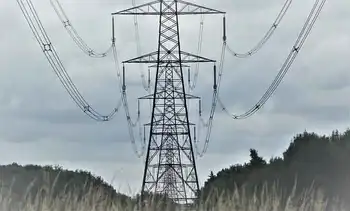India to buy wind technology
By Washington Times
Substation Relay Protection Training
Our customized live online or in‑person group training can be delivered to your staff at your location.

- Live Online
- 12 hours Instructor-led
- Group Training Available
The government-backed committee on energy criticized the Ministry of New and Renewable Energy for poor use of funds allocated to it during the 10th five-year plan, which led the Finance Ministry to reduce the ministry's budget for five consecutive years.
"As there is an urgent need to tap wind resources in the low wind regimes, there is a long-pending requirement to undertake more and more research and development activities, and develop wind electric generators for low wind regimes," said Gurudas Kamat, a lawmaker and chairman of the committee that wrote the report released recently.
Kamat said the government should initiate talks with global wind energy majors to buy the latest wind energy technology that is suitable to Indian conditions.
The report also criticized the failure of the ministry to fully use its research and development funds and asked the government to take immediate steps to ensure that all allocations are fully utilized in the future.
The report also expressed surprise and noted there was no direct correlation between the capacity installation of wind power and the number of units generated.
The report comes at a key time for India, whose expanding economy has led to a spike in energy demand. With an eye on energy security, the country is looking to alternate energy sources such as wind to be part of the energy mix.
In order to encourage private participation in the wind-energy sector, for example, India offers 80 percent accelerated depreciation along with concessional duties and a tax holiday for 10 years on profits earned.
The committee said, however, that though incentives and tax holidays were needed, they should be linked to the actual generation of power and its utilization as grid interactive power or as power for local use in villages and hamlets near the actual sites.
Acting on the recommendations of the report, the Ministry of New and Renewable Energy said it was considering a mechanism to monitor the incentives along with the actual production and utilization of wind power. It assured the parliamentary standing committee that wrote the report that the panel would be kept informed on the progress being made on the implementation of the recommendations.
Potential wind power generation for both grid and off-grid applications in India was estimated at about 45,000 megawatts. Two-thirds of the wind potential in India lies in areas with a modest wind regime. The wind capacity installed up to Jan. 31 this year is 6,315 MW.
"To some extent it is true the technology is not very much different. Considering the low wind regime that prevails in India, we should do more research and get the equipment manufacturers to tap low wind regimes and also generate more electricity," said P.K. Bhandari, secretary of the Ministry of Renewable Energy. "This would invite further investment even from the private sector and research and development of wind turbines.
"This is yet another benefit that will take place if incentive is linked to generation."
The ministry said that the Center for Wind Energy Technology would be the leading agency to coordinate research and development projects, including those pertaining to the development of megawatt-scale wind turbines for low wind regimes, component testing and the development of standards.
The ministry said it was looking at wind turbine models in various countries that are suitable to Indian conditions.
It said the response of private developers was encouraging as evident from the growth of the sector during the 10th five-year plan that ended in March.
Wind power installed capacity during 2002-07 was likely to cross 5,400 MW as compared to the 1,627 MW set up in the ninth plan period.











